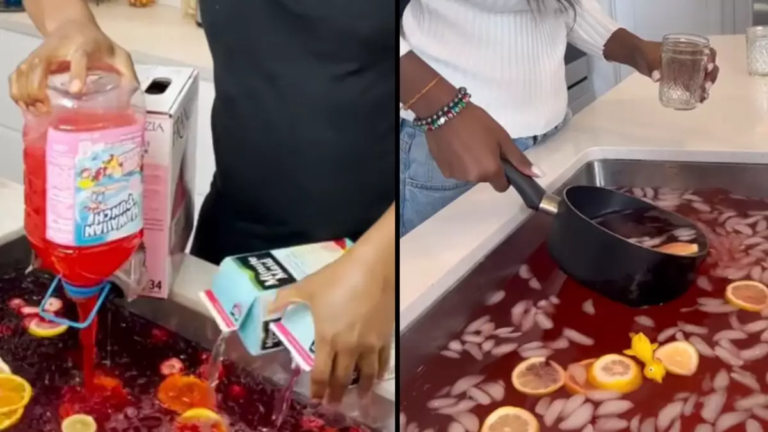TikTok is once again in a frenzy over a viral video, but one doctor with knowledge of the situation says it could be a serious illness that could land someone in hospital.
From lip syncing and viral dance moves to GRWM and unrealistic food hacks, tons of content strives to go viral every day.
With summer officially underway (although the UK weather doesn’t seem to be), the latest trend is making giant cocktail mixes. And where do they get made? In the sink.
The “Think Drinks” trend generated 145 million posts on TikTok.
One of the most viewed videos is by @thetipsybartender (real name Skyy John), who is known for his intense, alcoholic recipes. In the video, which has received over 58 million views, Skyy makes his famous “Jungle Juice” recipe in his own kitchen sink.
While this drink is definitely the kind of drink you’d want to have to cool down on a sunny afternoon, some people were a bit surprised to see where it’s made.
One TikTok user wrote: “Excuse me, what is that? In the sink?”
Another person said: “Looks good, but not in the sink.”

Tipsy bartender makes famous Jungle Juice in the sink (TikTok / realtipsybartender)
And a third said: “I’d definitely try this but not from the sink.”
He’s not the only one joining the trend: TikToker @starandshontwins is using his sink to make large quantities of Kool-Aid.
Even though the author emphasized that the sink was clean, one person said, “The inside of the sink is dirty.”
However, Medical Science Programme Leader Dr Gareth Nye revealed to Magnet Kitchens that doing this in the kitchen sink is actually one of the most dangerous places in the home when it comes to germs and harmful substances.
We’re talking about bacteria and illnesses that could potentially land you in hospital depending on the severity of the infection.
Dr Nye said: “The kitchen sink is usually considered one of the most dangerous places in the kitchen as this is where we throw out cooked and uncooked food waste and wash our hands after touching raw meat or other spills.”
“A study by the National Sanitation Foundation found that 45 percent of kitchen sinks tested positive for coliform bacteria, such as E. coli, and 27 percent had mold, which is known to cause allergic reactions and respiratory illnesses.”
Dr Nye adds: “Most drains also have some sort of clog, usually caused by grease, which can create a breeding ground for bacteria like E. coli and Salmonella to grow and work their way up to the sink area.”
“After all, kitchen sinks are used to dispose of items and there can be millions of bacteria in and around the sink and drain.”
If you really want to use your sink for entertaining and making drinks in the same way, Dr. Nye suggests using it as an ice bucket to keep drinks chilled overnight.

